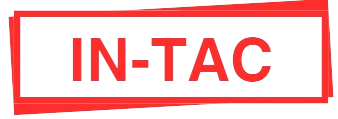The landscape of work is undergoing a profound transformation, with the traditional office-based model giving way to more flexible and dynamic approaches. The rise of remote work and the emergence of hybrid models are reshaping how we perceive and engage in work. In this article, we will explore the trends driving the future of work, the challenges and benefits associated with remote and hybrid models, and the role of standards in ensuring a smooth transition to this evolving paradigm.
Trends Shaping the Future of Work:
- Remote Work Revolution: The COVID-19 pandemic accelerated the adoption of remote work, demonstrating its feasibility on a global scale. As a result, many organizations have reevaluated the necessity of a physical office space and embraced remote work as a long-term or permanent option.
- Hybrid Work Models: A hybrid work model combines elements of remote and in-office work. This approach allows employees to split their time between working from home and coming into the office. It offers the flexibility desired by many workers while maintaining some level of in-person collaboration.
- Technological Advancements: Advances in technology, particularly in communication and collaboration tools, have played a pivotal role in facilitating remote work. Cloud-based platforms, virtual collaboration tools, and video conferencing have become integral to remote and hybrid work setups.
- Focus on Work-Life Balance: The shift towards remote and hybrid models reflects a growing emphasis on work-life balance. Employees are seeking greater flexibility in how, when, and where they work to better align with their personal and family commitments.
- Global Talent Pool: Remote work has opened up opportunities for businesses to tap into a global talent pool. Companies can now access skilled professionals from diverse geographical locations, fostering a more diverse and inclusive workforce.
Challenges and Benefits of Remote and Hybrid Models:

Challenges:
- Communication Barriers: Remote work can lead to communication challenges, including misinterpretation of messages and feelings of isolation. Effective communication becomes crucial for maintaining team cohesion.
- Tech-Related Issues: Reliance on technology introduces the risk of technical difficulties, from internet connectivity issues to software glitches. Organizations must invest in robust tech infrastructure and support to mitigate these challenges.
- Team Collaboration: Building and maintaining a strong team culture becomes more challenging in remote or hybrid settings. Leaders need to implement strategies that foster collaboration and a sense of belonging among team members.
- Employee Well-being: Remote work can blur the boundaries between professional and personal life, potentially leading to burnout. Employers must prioritize employee well-being by promoting work-life balance and providing mental health support. Did you like the article? Read also about Smart money management.
Benefits:
- Flexibility: Remote and hybrid models offer employees greater flexibility in managing their work schedules, contributing to improved work-life balance and job satisfaction.
- Cost Savings: Organizations can realize cost savings by reducing the need for extensive office space, utilities, and other associated expenses. This can contribute to improved financial sustainability.
- Increased Productivity: Many workers report increased productivity when working remotely due to reduced commuting time, fewer workplace distractions, and personalized work environments.
- Talent Acquisition and Retention: Offering remote or hybrid options enhances an organization’s ability to attract and retain top talent by providing a desirable work arrangement.
The Role of Standards in Adapting to Remote and Hybrid Work:

Standards play a crucial role in guiding organizations through the transition to remote and hybrid work models. While there may not be specific standards dedicated solely to these models, established frameworks can provide valuable guidance in areas such as information security, communication protocols, and organizational resilience.
One such standard is ISO 27001, which focuses on information security management. As remote work relies heavily on digital communication and data exchange, adhering to ISO 27001 principles ensures that organizations maintain the confidentiality, integrity, and availability of information.
For a broader perspective on remote work practices, Wikipedia serves as a comprehensive resource. The Wikipedia page on remote work covers the history, benefits, and challenges of remote work, offering insights for individuals and organizations navigating this evolving landscape.
Government websites, such as Canada.ca, provide information on labor standards, regulations, and best practices. While not specific to remote work, these resources offer guidance on compliance, employment rights, and workplace policies that are relevant in any work environment.
Conclusion:
The future of work is undeniably characterized by flexibility and adaptability. Remote and hybrid work models have become integral components of this future, offering organizations and employees newfound opportunities and challenges. Embracing these changes requires a strategic approach, incorporating effective communication, technological infrastructure, and a commitment to employee well-being. By referencing established standards, leveraging available resources like Wikipedia, and staying informed through government websites, organizations can navigate the complexities of remote and hybrid work, ensuring a smooth and successful transition into the evolving landscape of the modern workplace.

